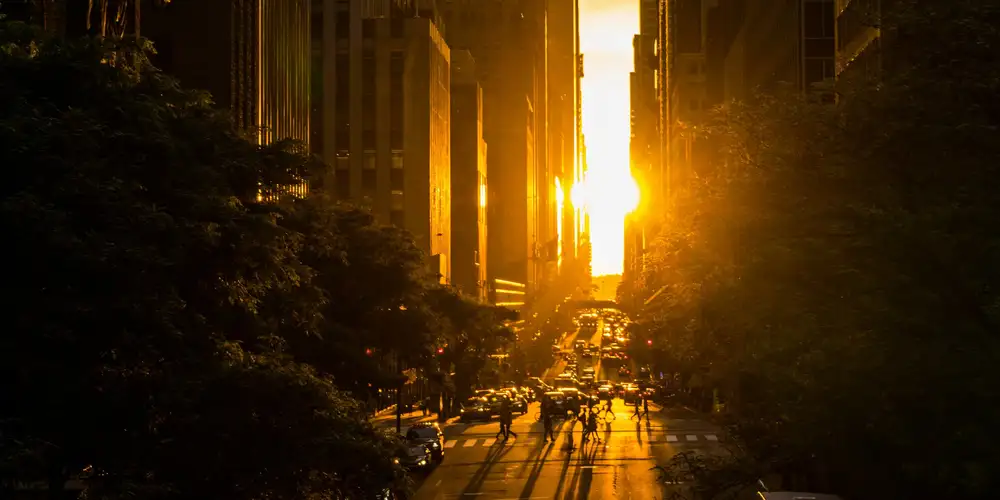As the weather warms up, New Yorkers once again take to the sidewalks for one of the city’s most photogenic rituals: Manhattanhenge. This rare alignment of the setting sun with the city’s street grid will dazzle viewers on May 28 and 29, 2025, casting a brilliant orange light through the concrete canyons of Manhattan. Despite overcast skies and the threat of rain this week, the event still draws devoted fans armed with cameras and patience.
Featured VideoManhattanhenge, the nickname an homage to England’s Stonehenge, happens twice each year: just before and after the summer solstice. This solar event doesn’t coincide with the solstice itself, which falls on June 20. Instead, it occurs roughly three weeks on either side. The next viewing opportunity will take place on July 11 and 12.
AdvertisementWhat is Manhattanhenge and why is it special?
During Manhattanhenge, the setting sun aligns perfectly with the city’s east-west street grid. As a result, sunlight pours through the gaps between buildings, illuminating the streets in deep hues of orange and red. While many assume this was intentional, the effect is purely coincidental. The street grid wasn’t designed with solar alignments in mind, but the result is striking nonetheless.
Astrophysicist and native New Yorker Neil deGrasse Tyson coined the term “Manhattanhenge” back in 1997. He drew inspiration from Stonehenge, the ancient monument in England known for its own sun-centric alignments. Unlike Stonehenge, however, Manhattanhenge is an accidental alignment. It is simply a happy accident of urban planning.
“Fond memories of living in the city and falling upon a sunset 🌇 perfectly framed by two buildings!” wrote @kaytom2020 on an Instagram post all about the phenomenon.
AdvertisementWhere and when to see Manhattanhenge
For the best views, photographers and skywatchers should head to wide cross streets with unobstructed views of the horizon. According to CBS, prime spots include 14th, 23rd, 34th, 42nd, and 57th Streets, or even out in Long Island City, Queens. Timing is also crucial for the fleeting event. On May 28 and July 12, viewers can expect to see half the sun resting on the horizon, with the best viewing time at 8:13 p.m. on Wednesday. On May 29 and July 11, the entire sun appears framed by skyscrapers, hovering neatly between buildings.
AdvertisementUnfortunately, the weather plays a big role in visibility. Rain and heavy clouds can completely block the phenomenon. This week’s forecast hasn’t been ideal, but those who miss out still have July’s display to look forward to.
Until then, keep your camera charged and your eyes on the forecast.

 Discord explores virtual rewards for its ad product as it prepares for a potential IPO
Discord explores virtual rewards for its ad product as it prepares for a potential IPO